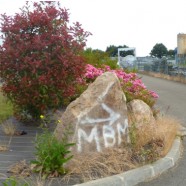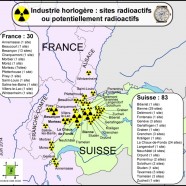Australian waste: Divergence between Robin des Bois and the French Ministry of Environment
Robin des Bois regrets that the French Ministry of Environment decided to refuse the importation of 132 tonnes of chemical waste from Sydney, Australia.
The NGO worked over numerous months with Orica, holder of the waste, and with Trédi, disposal contractor of hazardous waste, to develop a method of operation likely to unblock an inextricable situation in Australia and to reduce, to a minimum, maritime transport risks.
Unfortunately, the Ministry of Environment joined the gang and shares certain caricatures of French and international environmentalist, by not taking into account the benefits of the plan well thought out by Robin des Bois, Trédi and Orica. (cf. Robin des Bois’ viewpoint on the importation of HCB from Australia to France. June 16, 2014)
Destruction of Syrian Chemical Weapons (n°5)
According to the Organisation for the Prohibition of Chemical Weapons (OPCW) the most challenging phase towards the destruction of Syrian chemical weapons has just ended with the removal of the last declared precursors and other chemicals from Syrian soil. This first step was constantly delayed in spite of a good knowledge of the associated risks and the participation by numerous State Parties of the OPCW Convention.
However, the next step will enter into unknown territory. The plan is to neutralise 20 metric tonnes of mustard agent and 540 metric tonnes of sarin precursor at sea.
Destruction of Syrian Chemical Weapons (n°5)
According to the Organisation for the Prohibition of Chemical Weapons (OPCW) the most challenging phase towards the destruction of Syrian chemical weapons has just ended with the removal of the last declared precursors and other chemicals from Syrian soil. This first step was constantly delayed in spite of a good knowledge of the associated risks and the participation by numerous State Parties of the OPCW Convention.
However, the next step will enter into unknown territory. The plan is to neutralise 20 metric tonnes of mustard agent and 540 metric tonnes of sarin precursor at sea.











